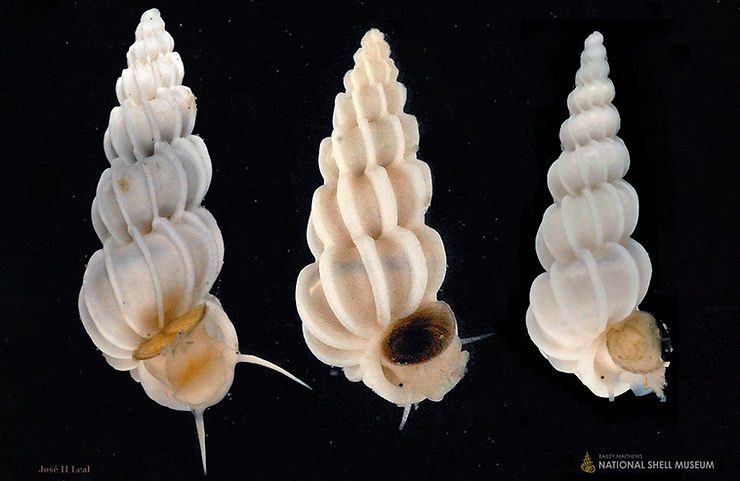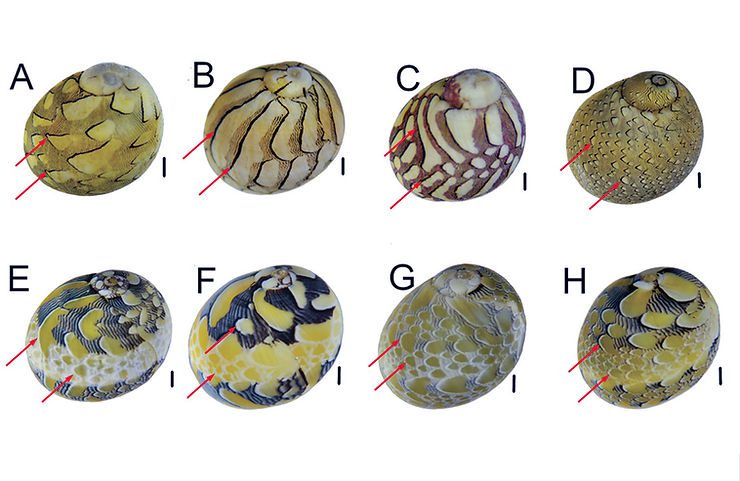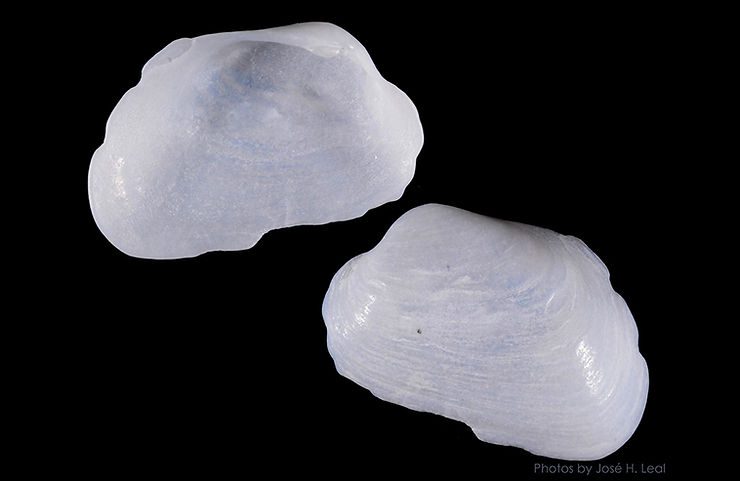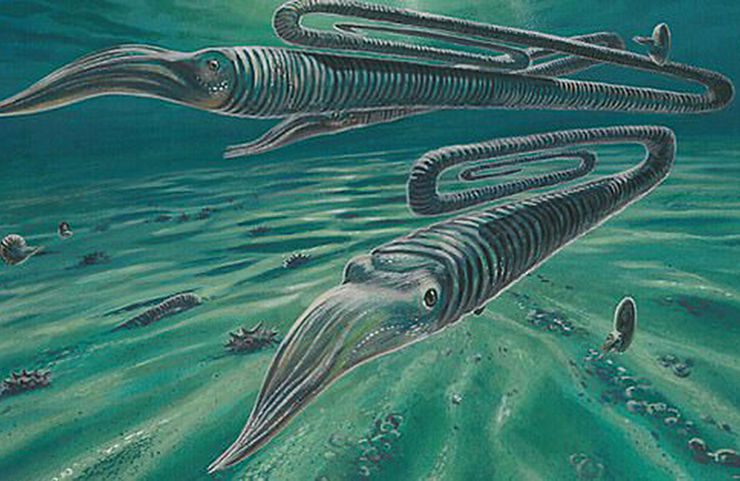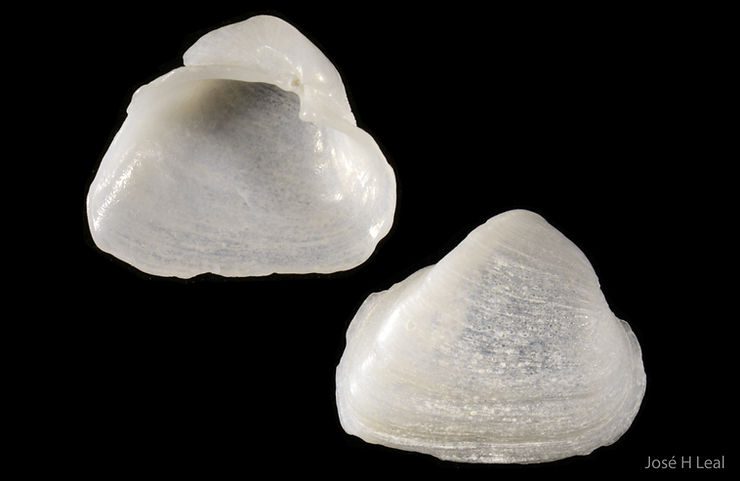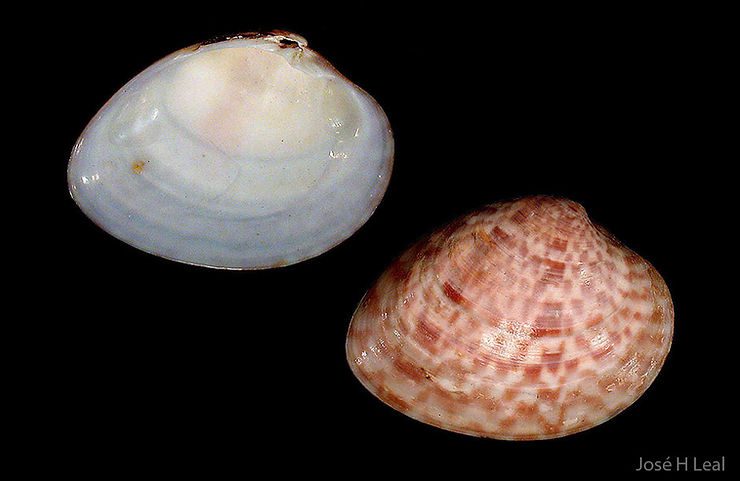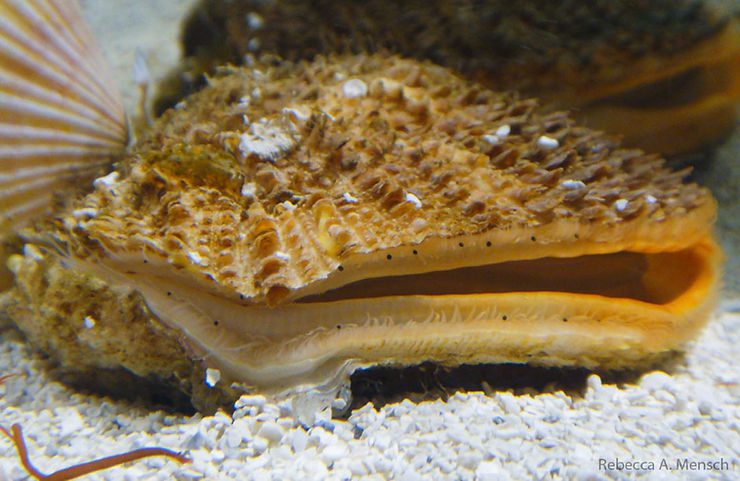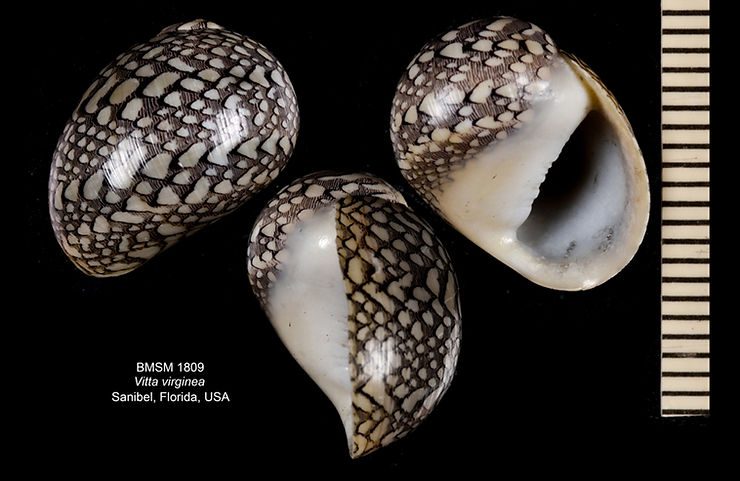
Shell of the Week: The Virgin Nerite
At 12 mm (about 0.5 inch), Vitta virginea (Linnaeus, 1758) is another small nerite with rounded, smooth shell. The parietal shield (the flat area inside aperture) is crescent-shaped, white, and may bear a number of small, irregular teeth. The shell is very variable in color; the dominant color may be black, red, green, purple, with spots, wavy or zigzag lines, and bands of alternating colors. The single shell of this species from Sanibel present in the Museum collection was collected in 1950 at
